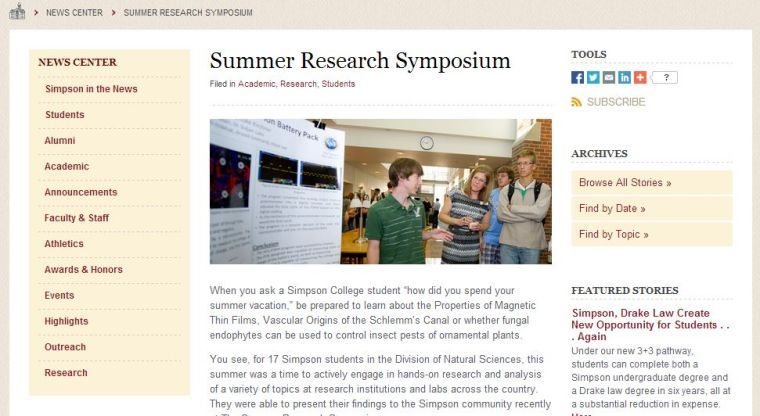Summer Research Symposium Profiles
November 7, 2013
A couple profiles that highlights the work students have done over the summer
Michael Frank
- Year: Senior
- Major: Math and Biology
This summer, senior Michael Frank took on one mammoth sized project.
Literally.
Instead of staying on campus, Frank spent his summer at Valparasio University in Indiana to research the role that humans played in the extinction of the mammoth. To help with their findings, Frank and his research team used a math model.
“With math modeling you get a real world problem, because most students think what can I do with math besides my taxes,” Frank said. “You get this real world problem with equations in math that can help describe how things work, so you apply those to that real world topic and you can get a specific answer to something.
In the research project, Frank first looked at the life of the mammoths along with the hunting habits of the humans at the time. He then ran numerous differential equations between the two.
When the math models were run Frank said that sometimes the mammoths went extinct where others they didn’t. Because of this, Frank said they were not able give reason that the mammoths went extinct solely from human interaction.
Because the research project has aspects from both math and biology, it would be considered an interdisciplinary research project. Frank said the fact the project was interdisciplinary really helped him as a scientist.
“It really rejuvenated my focus on biology, so I really want to pursue that career or interdisciplinary math bio work,” Frank said.
——————————————————————————————-
Andrew Dexter
- Year: Senior
- Major: Biology and Chemistry Double Major
While most students carry out summer research on campus or at another university, senior Andrew Dexter took his all the way to Aarhus University in Denmark.
While in Aarhus, Dexter researched an up and coming area in biochemistry called DNA origami.
In DNA, scientist try to create 3 and 4 dimensional shapes out of DNA. This summer, Dexter and his research team were building nanowires, which would be used in biosensors that are used to transfer electricity to make Nano sensors more effective.
“Right now the purpose is to expand the process of DNA origami,” Dexter said. “Right now we can make any structure we want, but it’s limited application wise.”
Since DNA origami is such a new area in the biochemistry field, Dexter is very excited that he has been able to participate in research its early stages.
“DNA Origami was discovered in 2007 and in science terms, that’s not very long,” Dexter said. “I’ve been doing research in this now for over an entire year so to be there for the start up of this new kind of nanotechnology has been really cool.”
By traveling to Denmark for his summer research, Dexter said he benefited from being able to work with Dr. Kurt Gothelf.
“Gothelf is a very well known scientist in the DNA origami field so being able to work with him was really fantastic,” Dexter said. “Some of the other big names in the field are Harvard and Cal Tech, Aarhus is definitely up there with those research institutes so it was a really good chance for me to get involved with some really high level research.”












